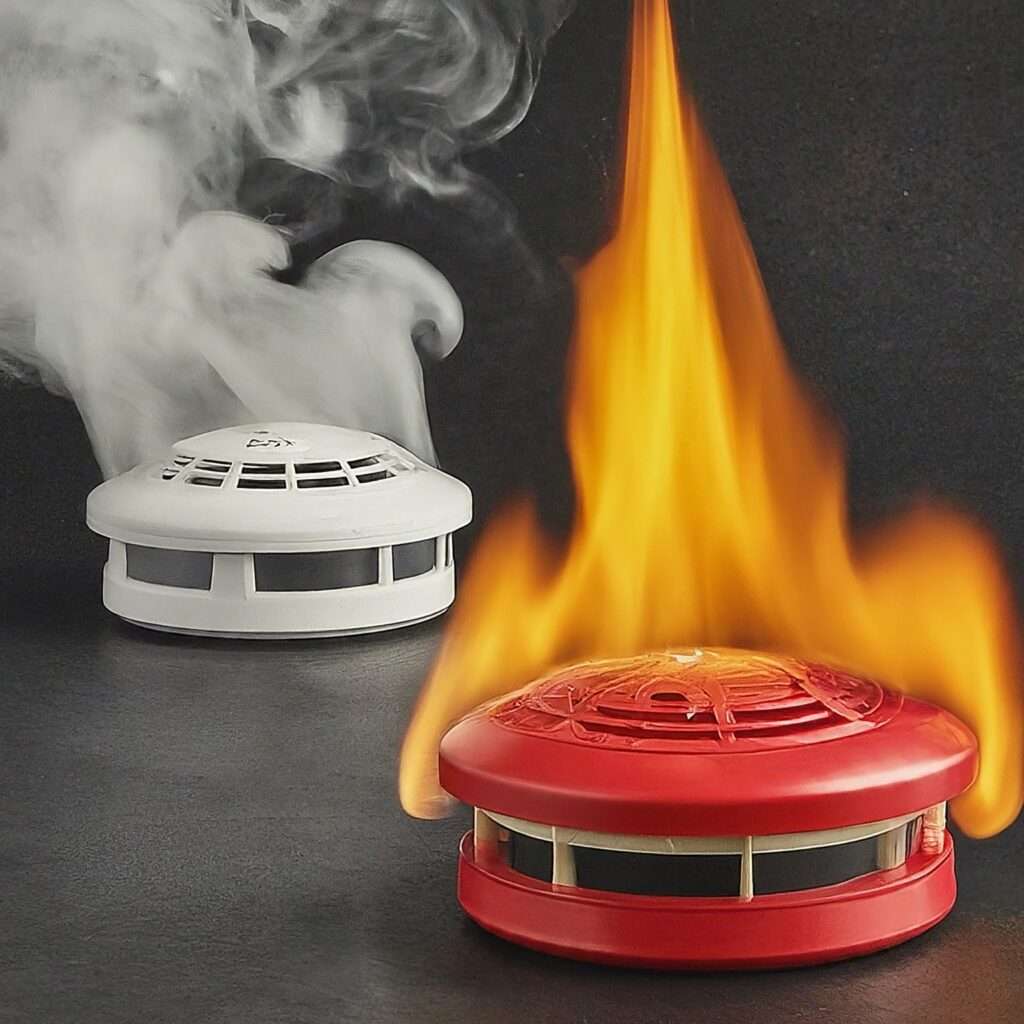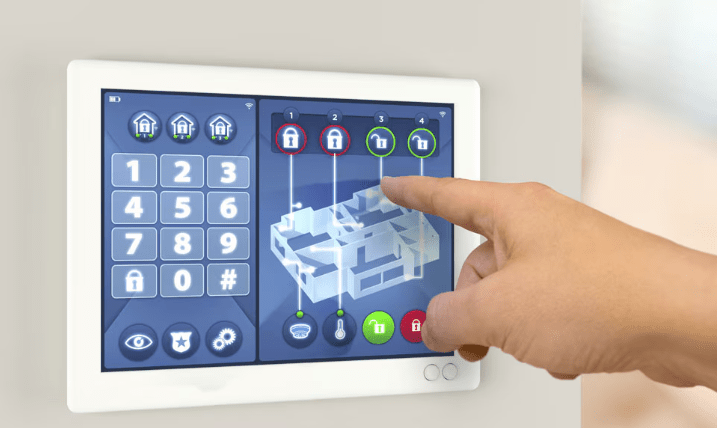Introduction
In today’s world, the importance of fire safety cannot be overstated. Fires can cause devastating damage to property, endanger lives, and disrupt communities. The stakes are incredibly high, and ensuring that buildings are equipped with effective fire detection and alarm systems is crucial. Modern fire alarm control panels play a pivotal role in this effort, providing advanced technology that enhances our ability to detect, respond to, and manage fire emergencies efficiently.
Over the years, fire alarm systems have evolved significantly, integrating cutting-edge technology to improve safety and reliability. Modern fire alarm control panels are at the forefront of this evolution, offering a range of sophisticated features designed to enhance fire detection and response. In this blog post, we will explore the key features of these advanced systems, examining how they contribute to better safety and more efficient fire management. From intelligent detection to seamless integration with other building systems, modern fire alarm control panels represent a significant advancement in fire safety technology.
The Evolution of Fire Alarm Systems
Early Fire Detection Methods: Historical Context

The history of fire detection is rich and varied, reflecting humanity’s ongoing struggle to protect lives and property from the ravages of fire. Early methods of fire detection were rudimentary and relied heavily on human vigilance. In ancient times, fire watchers would stand guard in strategic locations, such as church towers or watchtowers, to spot fires and alert the community. These methods, while useful, were limited by human perception and response time.
Development of Fire Alarm Control Panels: Milestones in Technology
The advent of technology brought significant advancements in fire detection and alarm systems. In the 19th century, the invention of the telegraph played a crucial role in the development of early fire alarm systems. One of the first notable innovations was the creation of the municipal fire alarm telegraph system in the 1850s by Dr. William Channing and Moses Farmer. This system allowed for quicker communication between fire stations and the locations of fires, drastically improving response times.
The 20th century saw further advancements with the introduction of automatic fire alarm systems. These systems utilized heat and smoke detectors to automatically trigger alarms. In the 1930s, the first practical smoke detectors were developed, leading to the creation of more reliable and efficient fire alarm systems. The integration of electronics into fire alarm systems during the mid-20th century marked another significant milestone, paving the way for the sophisticated fire alarm control panels we use today.
Transition to Modern Systems: Integration of Digital Technologies

The transition from traditional to modern fire alarm systems has been characterized by the integration of digital technologies. This shift began in the late 20th century with the advent of microprocessors and digital communication networks. Modern fire alarm control panels now incorporate advanced digital features, such as intelligent sensors, programmable logic, and networked communication capabilities.
One of the key innovations in modern fire alarm systems is the use of addressable technology. Unlike conventional systems, where detectors are grouped into zones, addressable systems allow each detector to have a unique address. This enables more precise identification of the location of a fire, improving response times and reducing the likelihood of false alarms.
Additionally, modern systems often feature graphical user interfaces, remote access via mobile apps, and integration with other building management systems. These advancements not only enhance the functionality of fire alarm systems but also make them more user-friendly and adaptable to the needs of various environments.
In summary, the evolution of fire alarm systems from early manual methods to sophisticated digital technologies has significantly improved our ability to detect and respond to fires. Modern fire alarm control panels are a testament to this progress, offering enhanced safety, reliability, and efficiency.
Key Components of Fire Alarm Control Panels
Control Unit: The Brain of the System
The control unit is often referred to as the brain of the fire alarm system. It is the central hub that processes input from various sensors and devices, makes decisions based on pre-programmed criteria, and initiates appropriate responses. Modern control units are equipped with microprocessors and advanced software that allow for complex programming and customization. They can manage multiple zones, process data from addressable devices, and interface with other building management systems.
Initiating Devices: Smoke Detectors, Heat Detectors, Manual Pull Stations


Initiating devices are the sensors and mechanisms that detect signs of fire and trigger the alarm system. They include:
- Smoke Detectors: These devices sense the presence of smoke, which is often the first indicator of a fire. There are different types of smoke detectors, including ionization, photoelectric, and dual-sensor detectors, each designed to respond to specific kinds of smoke particles.
- Heat Detectors: Heat detectors respond to the rise in temperature caused by a fire. They can be fixed temperature detectors, which trigger an alarm when a specific temperature is reached, or rate-of-rise detectors, which respond to a rapid increase in temperature.
- Manual Pull Stations: These are manually operated devices that allow occupants to trigger the fire alarm system. They are strategically placed in buildings to ensure easy access in case of an emergency.
Notification Appliances: Alarms, Strobes, Speakers
Notification appliances are the devices that alert building occupants to the presence of a fire. They include:
- Alarms: Audible alarms, such as bells, horns, and sirens, emit loud sounds to alert people to evacuate the building.
- Strobes: Visual alarms, such as strobe lights, provide a visual indication of an alarm, which is especially important for people with hearing impairments.
- Speakers: In voice evacuation systems, speakers are used to deliver clear, pre-recorded or live voice messages, providing instructions and information to occupants during an emergency.
Power Supplies: Primary and Backup Power Sources
Reliable power supply is crucial for the continuous operation of fire alarm systems. They typically have:
- Primary Power Supply: Usually connected to the building’s main electrical supply, ensuring that the system is powered under normal conditions.
- Backup Power Supply: In case of a power outage, the system switches to a secondary power source, such as batteries or a generator, to ensure uninterrupted operation. This redundancy is critical for maintaining the system’s reliability during emergencies.
Communications Systems: Connecting the System to Monitoring Services
Communication systems link the fire alarm control panel to external monitoring services and other building systems. Key components include:
- Telephone Lines: Traditional fire alarm systems often use dedicated phone lines to transmit alarm signals to a central monitoring station.
- Cellular and Internet Connections: Modern systems can utilize cellular networks and internet connections for more reliable and faster communication with monitoring services.
- Networked Systems: Advanced fire alarm control panels can be integrated into building management systems, allowing for centralized monitoring and control. This integration facilitates coordinated responses to emergencies, enhances system diagnostics, and enables remote access and management.
In summary, the key components of fire alarm control panels work together to provide comprehensive fire detection, notification, and response capabilities. Each component plays a vital role in ensuring the effectiveness and reliability of the overall system, contributing to enhanced safety and protection for building occupants.
Advanced Features of Modern Fire Alarm Control Panels
Networked Systems: Centralized Monitoring and Control
Modern fire alarm control panels often feature networked systems that enable centralized monitoring and control. These systems allow multiple fire alarm control panels within a building or across multiple buildings to be interconnected. This networked approach offers several advantages:
- Centralized Monitoring: Facility managers can monitor the status of all connected panels from a single location, improving oversight and response times.
- Coordination of Responses: Centralized control facilitates coordinated emergency responses, ensuring that all parts of a building or complex are addressed simultaneously.
- Scalability: Networked systems can easily be expanded to include additional panels as buildings grow or new facilities are added.
Intelligent Detection: Smart Sensors and AI Integration

Intelligent detection represents a significant advancement in fire alarm technology. Modern fire alarm systems utilize smart sensors and artificial intelligence (AI) to enhance detection accuracy and reduce false alarms.
- Smart Sensors: These sensors can differentiate between actual fire conditions and non-threatening factors like cooking smoke or steam. They can adjust their sensitivity based on environmental conditions and the presence of potential fire indicators.
- AI Integration: AI algorithms analyze data from multiple sensors to identify patterns that indicate a fire. This helps in early and accurate detection, allowing for quicker and more reliable responses.
Programmable Logic: Customizable Responses to Different Scenarios
Programmable logic in modern fire alarm control panels allows for highly customizable responses to various emergency scenarios. This feature enables system administrators to pre-program specific actions based on different types of alarms and conditions.
- Tailored Responses: For example, a smoke detector in a kitchen might trigger a different response than one in a storage area, reducing the likelihood of unnecessary evacuations.
- Sequential Actions: The system can be programmed to initiate a series of actions, such as shutting down HVAC systems, unlocking emergency exits, and notifying emergency services in a specific order, enhancing overall safety and efficiency.
User Interfaces: Touchscreens, Mobile Apps, and Remote Access
User interfaces for modern fire alarm control panels have evolved to become more user-friendly and accessible.
- Touchscreens: Interactive touchscreens provide an intuitive way for users to interact with the system, view system status, and control various functions.
- Mobile Apps: Many systems offer mobile apps that allow users to monitor and control the fire alarm system remotely. This feature is particularly useful for facility managers who need to manage multiple sites.
- Remote Access: Remote access capabilities enable users to perform diagnostics, receive alerts, and manage the system from any location, improving convenience and responsiveness.
Integration with Building Systems: Fire Suppression, HVAC, and Security Systems
Integration with other building systems is a critical feature of modern fire alarm control panels. This integration enhances overall building safety and operational efficiency.
- Fire Suppression Systems: The fire alarm system can automatically activate fire suppression systems, such as sprinklers or gas suppression systems, to quickly contain and extinguish fires.
- HVAC Systems: Integrating with HVAC systems allows the fire alarm control panel to shut down air handling units to prevent the spread of smoke and fire through ventilation ducts.
- Security Systems: Coordination with security systems can facilitate automatic unlocking of emergency exits, disablement of security barriers, and activation of surveillance cameras to record the emergency situation.
In summary, the advanced features of modern fire alarm control panels significantly enhance their functionality, reliability, and user experience. These features contribute to more accurate detection, better emergency management, and improved integration with other building systems, ultimately leading to higher levels of safety and efficiency.
Benefits of Modern Fire Alarm Systems
Enhanced Safety: Faster Detection and Response
One of the primary benefits of modern fire alarm systems is enhanced safety through faster detection and response. Advanced sensors and intelligent detection technologies enable these systems to identify potential fire hazards more quickly and accurately than ever before. This rapid detection allows for immediate initiation of emergency protocols, which can include alerting occupants, activating fire suppression systems, and notifying emergency services. The result is a significant reduction in response times, which can save lives and minimize property damage.
Reduced False Alarms: Improved Accuracy and Reliability

Modern fire alarm systems are designed to significantly reduce the incidence of false alarms. Enhanced sensor technology, coupled with artificial intelligence, allows these systems to distinguish between real fire threats and non-threatening conditions such as cooking smoke or steam. This improved accuracy not only helps maintain occupant trust and reduces unnecessary disruptions but also ensures that emergency services are only dispatched when genuinely needed. Reduced false alarms also lower the risk of alarm fatigue, where occupants become desensitized to alarms due to frequent false alerts.
Ease of Maintenance: Remote Diagnostics and Updates
Ease of maintenance is another critical benefit of modern fire alarm systems. Many contemporary systems offer remote diagnostics and updates, allowing technicians to monitor the system’s status and perform maintenance tasks without needing to be physically present. This capability includes:
- Remote Monitoring: Continuous monitoring of system performance and health, identifying potential issues before they become critical.
- Automatic Updates: The ability to update system software remotely ensures that the fire alarm system is always running the latest security patches and functionality enhancements.
- Predictive Maintenance: Using data analytics to predict when components might fail, enabling preemptive maintenance and reducing downtime.
Scalability: Adapting to the Needs of Different Buildings and Applications
Modern fire alarm systems are highly scalable, making them suitable for a wide range of buildings and applications, from small residential properties to large commercial complexes. This scalability includes:
- Modular Design: Components can be added or removed as needed, allowing the system to grow or shrink based on the building’s requirements.
- Network Integration: The ability to network multiple control panels and systems across various locations provides comprehensive coverage and centralized management.
- Customization: Systems can be tailored to meet specific needs, whether it’s accommodating unique architectural features or addressing particular fire hazards present in different environments.
Cost Efficiency: Long-term Savings Through Reduced Damage and Insurance Premiums
While the initial investment in modern fire alarm systems can be substantial, the long-term cost efficiency is significant. Benefits include:
- Reduced Damage: Faster detection and response times mean that fires are often contained and extinguished before causing extensive damage, leading to lower repair and replacement costs.
- Lower Insurance Premiums: Many insurance companies offer reduced premiums for buildings equipped with advanced fire detection and suppression systems, recognizing the decreased risk of significant fire damage.
- Energy Efficiency: Modern systems are often more energy-efficient, contributing to lower operational costs over time.
In summary, modern fire alarm systems offer a multitude of benefits that enhance safety, reduce false alarms, simplify maintenance, and provide scalability and cost efficiency. These advantages make them an invaluable investment for any building, ensuring better protection for occupants and property alike.
Future Trends in Fire Alarm Control Panels
IoT and Connectivity: Integration with Smart Building Ecosystems
The Internet of Things (IoT) is revolutionizing fire alarm control panels by integrating them into smart building ecosystems. This connectivity allows fire alarm systems to communicate with various other building systems and devices, enhancing overall building management and safety.
- Interconnected Systems: Fire alarm panels can now interact with HVAC systems, lighting, access control, and more, ensuring a coordinated response to fire emergencies.
- Real-Time Data Sharing: Continuous data exchange between fire alarm systems and other smart devices allows for real-time monitoring and immediate action.
- Enhanced User Control: Building managers can access and control fire alarm systems remotely via smartphones or computers, providing flexibility and improving response times.
Artificial Intelligence and Machine Learning: Predictive Maintenance and Smarter Detection
Artificial Intelligence (AI) and Machine Learning (ML) are becoming integral components of modern fire alarm systems, providing significant improvements in detection and maintenance.
- Predictive Maintenance: AI algorithms analyze data from fire alarm systems to predict potential failures before they occur. This proactive approach reduces downtime and maintenance costs.
- Smarter Detection: ML models enhance the accuracy of fire detection by learning from historical data and identifying complex patterns that indicate fire, thereby reducing false alarms and improving response accuracy.
- Adaptive Systems: AI can enable fire alarm systems to adapt to changing environmental conditions, optimizing their sensitivity and functionality based on real-time data.
Sustainability: Eco-Friendly Materials and Energy-Efficient Systems
As sustainability becomes a priority, fire alarm control panels are evolving to incorporate eco-friendly materials and energy-efficient technologies.
- Green Materials: Manufacturers are increasingly using recyclable and non-toxic materials in the production of fire alarm systems, reducing environmental impact.
- Energy Efficiency: Advanced fire alarm systems are designed to consume less power without compromising performance. Features such as energy-efficient sensors and low-power communication modules help in reducing the overall energy footprint.
- Sustainable Practices: The industry is adopting sustainable manufacturing practices, including reducing waste and optimizing resource use, contributing to a lower carbon footprint.
Cybersecurity: Protecting Against Digital Threats
With the increasing reliance on digital technologies and connectivity, cybersecurity has become a critical concern for fire alarm systems.
- Robust Security Protocols: Modern fire alarm systems are equipped with advanced security measures, including encryption, secure communication channels, and multi-factor authentication, to protect against cyber threats.
- Regular Updates: Continuous software updates ensure that fire alarm systems remain protected against the latest cybersecurity threats, maintaining system integrity and reliability.
- Incident Response Plans: Integrated fire alarm systems are now designed with cybersecurity incident response plans, ensuring quick action in case of a cyber attack and minimizing potential disruptions.
Case Studies
Commercial Buildings: Implementation and Benefits
Modern fire alarm control panels have revolutionized fire safety in commercial buildings. For instance, a large office building in New York City recently upgraded to a networked fire alarm system with intelligent detection capabilities.
- Implementation: The new system included addressable smoke and heat detectors, integrated with the building’s HVAC and security systems. It also featured centralized monitoring and control via a dedicated control room.
- Benefits: The upgrade resulted in faster detection and response times, significantly reducing fire-related damage during a recent small electrical fire. The system’s ability to differentiate between real threats and false alarms has also minimized unnecessary evacuations, ensuring business continuity.
Residential Complexes: Enhanced Safety Features
A high-rise residential complex in San Francisco implemented a modern fire alarm system to enhance safety for its residents.
- Implementation: The system included a combination of smart smoke detectors, manual pull stations, and voice evacuation speakers, all integrated with mobile app connectivity for remote monitoring by building managers.
- Enhanced Safety Features: The inclusion of voice evacuation capabilities ensured clear communication during emergencies, while the mobile app allowed for quick diagnostics and alerts. The system’s intelligent sensors have also reduced false alarms, providing peace of mind for residents.
Industrial Facilities: Specialized Requirements and Solutions
An industrial facility in Houston, Texas, dealing with hazardous materials, required a fire alarm system tailored to its unique needs.
- Specialized Requirements: The facility needed a system capable of detecting fires in high-risk areas, such as chemical storage and processing zones, where traditional smoke detectors might not be effective.
- Solutions: The implemented system featured specialized heat detectors and flame detectors, along with gas detection sensors. These were connected to a robust control panel capable of withstanding harsh industrial environments.
- Benefits: The new system provided precise detection and immediate alerts, enabling rapid response to potential fire hazards. This not only ensured the safety of employees but also protected valuable assets and reduced downtime.
Public Buildings: Ensuring Safety in High-Traffic Areas
A major convention center in Chicago upgraded its fire alarm system to handle the safety needs of large crowds and high-traffic areas.
- Implementation: The system included an extensive network of addressable smoke and heat detectors, integrated with the building’s public address system for efficient communication during emergencies.
- Ensuring Safety: The system’s ability to provide clear, pre-recorded evacuation instructions helped manage crowd movement effectively during a recent fire drill. The centralized monitoring and remote access features allowed security personnel to quickly identify and respond to potential threats.
- Benefits: Enhanced safety measures have increased confidence among event organizers and attendees, ensuring the convention center can operate smoothly and safely even during large events.
Conclusion
Modern fire alarm control panels represent a significant advancement in fire safety technology, providing enhanced detection, response, and management capabilities. Through the integration of intelligent sensors, programmable logic, and networked systems, these advanced panels ensure faster and more accurate fire detection, significantly reducing the risk of damage and injury.
The evolution of fire alarm systems from rudimentary early methods to sophisticated digital technologies underscores the importance of continuous innovation in this field. The key components of modern systems, such as control units, initiating devices, notification appliances, power supplies, and communications systems, work in harmony to provide comprehensive fire safety solutions.


